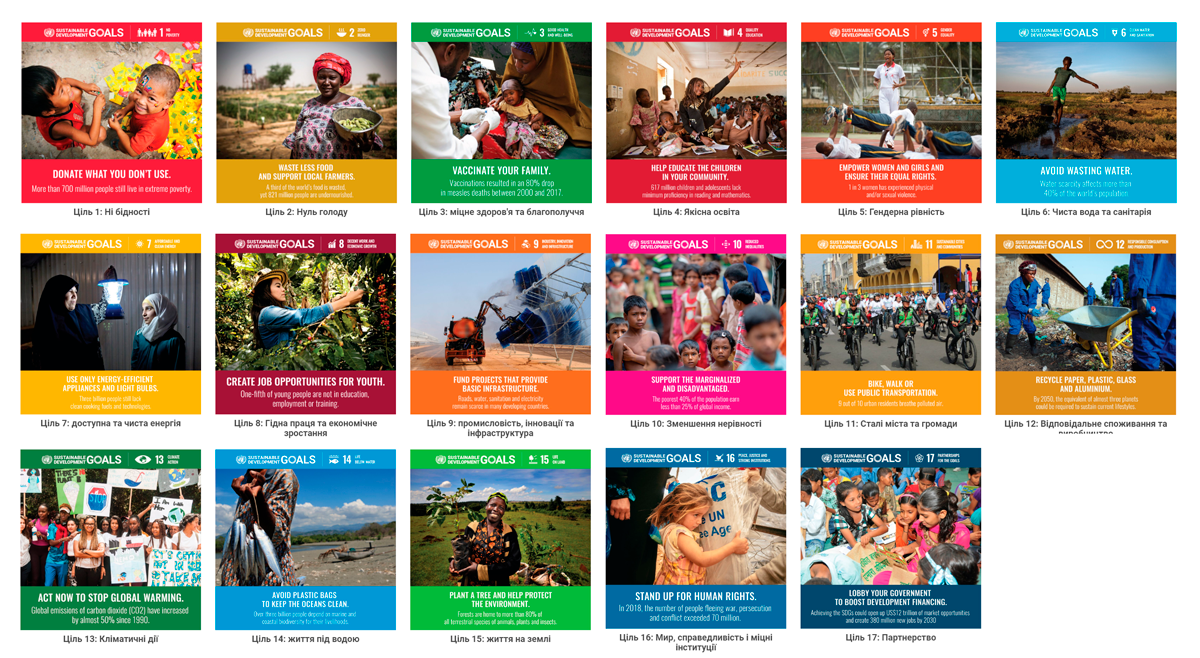On August 12, the planet celebrated another Youth Day - an international holiday initiated by the UN 24 years ago. In the understanding of the world community, this is not just an occasion to have a fun summer evening in the company of peers, but a serious event aimed at drawing the world's attention to specific problems and ways to solve them.
This year, the UN has declared digitalization the theme of Youth Day. According to experts and analysts of the organization, it is the latter that can at least somehow accelerate the achievement of sustainable development goals and save more than 55 trillion dollars along the way.

But all together they aim to solve one extremely complex problem: to change humanity and the economy in such a way that we consume no more resources than the planet can regenerate. Otherwise, disaster is inevitable. And our grandchildren will be forced to live on a planet from Pixar's WALL-E. No exaggeration.
The last time such a balance was observed was in 1971. The report published by the UN in 2023 provides eloquent conclusions. If countries were to agree now to move to a consumer balance with one decision, humanity would face restrictions that would radically exceed the measures taken during pandemic lockdowns.
We would need to reduce energy consumption by 60% (Ukrainians know firsthand how this works in practice), industrial production would need to be reduced by 75%. Almost completely abandon cars and air travel. If we talk about developed countries, this is equivalent to reducing personal consumption by almost 80%.
A lot, a lot of money
Obviously, such a scenario is absolutely impossible. UN experts understand this perfectly well, so the question is not posed in this way at all. Instead, they propose 17 goals, if achieved, we can overcome excessive waste and continue to develop. However, this requires a considerable amount of money - $ 176 trillion by 2030. Which (here again, disappointment) is physically impossible to allocate.
But there is good news. If done correctly, existing and future digital technologies alone can achieve at least 40% of the sustainable development goals for a very modest $2 trillion. And save the same $55 trillion. That is why the theme of this year's Youth Day was digitalization.
The UN report mentioned above provides specific points of application of digital technologies to achieve the Sustainable Development Goals. The first level is mostly about expanding access to information. For example, for the goal of “Eliminating Hunger”, real-time access to critical information can make a significant contribution. At the second level, digital technologies will help to move to precision agricultural production, and at the third level – to intensive.
In the part "Overcoming Poverty" at the third level, the UN considers it necessary to create a decentralized (blockchain technologies are mentioned here) and democratized financial system. Of course, at the global level.
There are also developments in this digital direction. Among the already implemented cases that are already implemented and meet the Sustainable Development Goals, the UN, for example, cites Google's Classroom platform, the creation of artificial intelligence, and telemedicine in its broadest sense, including remote robotic surgeries.
And in general, according to UN experts, data will become the new oil of the global economy. There are very real reasons for such thoughts. About half of the current global GDP directly depends on natural resources. We dig and burn, saw and grow, catch and collect.
If the “geometric” growth trend of the global economy continues, world GDP should grow from the current $44 trillion to $2 quadrillion by 2080. It is obvious that the planet’s resources will not be physically sufficient to ensure such growth.
Global Goals: Why it matters
It is important to realize that the seventeen global sustainable development goals listed in 2015 are only aspirations. The UN report of 2022 states that their achievement currently seems impossible. Not only because of the lack of resources, but also because of significant security crises that are changing the priorities of states before our eyes. Among the events of the “perfect storm” that literally destroyed hopes for the implementation of global tasks by 2030, not only the pandemic is mentioned, but also the war in Ukraine, tensions between China and Taiwan, as well as other existing and potential wars and conflicts. They force countries to distract themselves, for example, from the development of renewable energy, concentrating efforts on rearmament.
In other words, the world community has no illusions. But there is no doubt that sooner or later humanity will be forced to return to global tasks. After all, saving the planet, the future of children and grandchildren under current conditions cannot disappear from the agenda. And an extremely resource-intensive economy simply will not be able to develop in its current form.
Therefore, we will still have to achieve the Sustainable Development Goals. And – it is important to understand – all of them at the same time. At first glance, it may seem that overcoming poverty or access to education have nothing to do with global warming. But this is a mistaken idea. A person who is forced to survive thinks only about what to feed the children tonight, will not think about sorting garbage or endangered species. A person who lives under rocket fire is little bothered by environmental or social issues in war conditions. And this is quite natural. Although security and sustainable development are directly related.
Here (and finally) I would like to quote directly from a UN report, with which the organization tried to explain the latter concept: “Without security, there can be no significant sustainable development, and without sustainable development, the risk to human security increases. Therefore, the choice between security and development is illusory. Both of these factors must be fulfilled to guarantee continued peace, prosperity and freedom throughout the world.”










